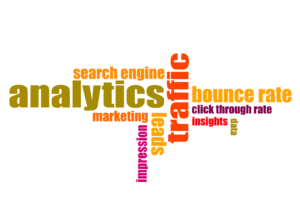Influencer marketing is a strategy that small businesses are using more and more to expand their reach and increase brand awareness. It entails collaborating with well-known social media personalities who market goods and services to their active followings. Here’s why it works:
- Improved brand awareness: Influencers serve as go-betweens, introducing your company to their audience in an organic way.
- Increased credibility: Because consumers trust influencers, their recommendations have greater sway.
- Targeted reach: Pick influencers whose fan base fits your intended demographics.
- Prospect for increased sales: Decisions about what to buy can be influenced by influencers.
Important Things to Think About Before Picking Influencer
- Choose a suitable influencer: Pay close attention to how your target audience and brand values align and chose someone that resonate these values
- Monitor the effectiveness of your campaign: As always monitor and evaluate outcomes to make better plans for the future.
- Digital agencies can help: Digital Agency like Dgazelle are dedicated agency that are skilled at managing campaigns and choosing influencers.
Why Small Businesses Should Consider Influencer Marketing
A growing number of small firms are adopting creative methods to increase brand awareness because they comprehend the intricacies of the changing digital ecosystem. One such tactic that is becoming more and more popular is influencer marketing, which entails partnerships with well-known social media personalities. Businesses may reach a larger audience and establish stronger relationships with potential customers by utilizing honesty and trust.
Customers are increasingly looking to influencers for advise on what to buy, which is a great way for small businesses to increase brand awareness. By serving as a bridge between companies and their audience, these influencers market goods in a genuine and relatable manner.
It’s as important, though, for small firms to comprehend how these tactics operate. While some digital agencies have the know-how to plan influencer marketing campaigns effectively, others could struggle if given the wrong direction. The procedure necessitates learning and adaptability, from choosing the best influencers to gauging the success of campaigns.
The combination of influencer marketing and small business has enormous development potential, despite certain obstacles. This route may result in greater sales volumes in the long run as well as improved customer acquisition and brand recognition.
Influencer Marketing’s Significance in Raising Brand Awareness
For small businesses hoping to succeed in the digitally-driven world of business, brand marketing is crucial. Influencer marketing is an important part of brand marketing and is a modern strategy that many digital companies use.
Influencer marketing, to put it simply, is a form of advertising in which companies collaborate with well-known individuals, or “influencers,” to publicize their products. By gaining access to these influencers’ followers, small businesses can increase their brand exposure through this effective marketing tactic.
Influencers with large followings on social media can impact their audience’s purchasing decisions in today’s social media-driven world. Their influence is mostly due to the fact that their supporters regard them as reliable and respectable people. Influencers that recommend your brand have a greater chance of getting their followers to think about and possibly purchase from you. As a result, influencer marketing is essential for increasing brand awareness among prospective customers.
However, it’s important for small businesses to choose influencers that share their values and target audiences before launching an influencer marketing campaign. Making the wrong decision could hurt the brand and waste money on marketing. Here’s where digital agencies like Dgazelle come into play, helping small businesses find the right influencers to leverage the power of this type of brand promotion.
How Influencer Marketing Is Used by Digital Agencies for Small Businesses
Making their customers’ brands stand out is an ongoing struggle for agencies operating in the fiercely competitive digital space. Influencer marketing is one powerful tactic they use, and it works especially well for small firms.
Influencer marketing is a strategy used by companies to market their goods or services through well-known members of their target market. This brand marketing strategy aims to increase brand recognition among the influencer’s followers—many of whom could become small company customers—rather than directly selling.
Digital agencies use such people’s influence to generate genuine, organic conversations about a brand. This approach can have a big impact, especially in a world where a lot of customers rely on recommendations from influencers—people they respect and trust. It’s clear why this approach works especially well for small firms that might not have large marketing expenditures or widespread awareness given the level of trust and reach these influencers have.
Digital agencies carefully select influencers whose followers closely match the target demographic of small businesses in order to optimize this strategy. Additionally, they guarantee that the influencers have a genuine relationship with the company, which gives audiences a sense of authenticity.
Steps to used successfully use influencer marketing for small business brand marketing
When it comes to influencer marketing, it’s not always about how many followers an influencer has; there are list of things to consider before launching campaign with an influencer and here is a summarized one
- Determine Your Target target: Determine your target before launching an influencer marketing campaign. Recognize their online hangouts, pain areas, and preferences. This aids in choosing the appropriate influences.
- Select the Correct Influencers: Go with those who’s values coincide with your brand. Small businesses can benefit greatly from micro-influencers since they have a loyal and active fan base.
- Establish Specific Objectives: Identify your desired outcomes, such as increased revenue, lead generation, or brand recognition. Specific objectives help you gauge your strategy’s effectiveness.
- Produce Genuine Content: Collaborate with influencers to produce content that captures the essence of your business and appeals to their audience. Being genuine is essential to fostering trust.
- Keep Track of and Measure: Utilize metrics such as engagement rates, conversions, and ROI. Use these insights to refine future campaigns.
Conclusion
Using influencers to your advantage has great power and may hold the key to realizing your small business’s full potential for success because influencers with their loyal audience can turn to loyal customer base which is a great return on investment and raise your company’s profile overall.
But never forget that your brand marketing plan can be greatly influenced by the proper influencer. So, make wise plans!
GET IN TOUCH
Remember, the right influencer can significantly shape your brand marketing strategy. leave the heavy lifting to us to help you partner with the right influencer







